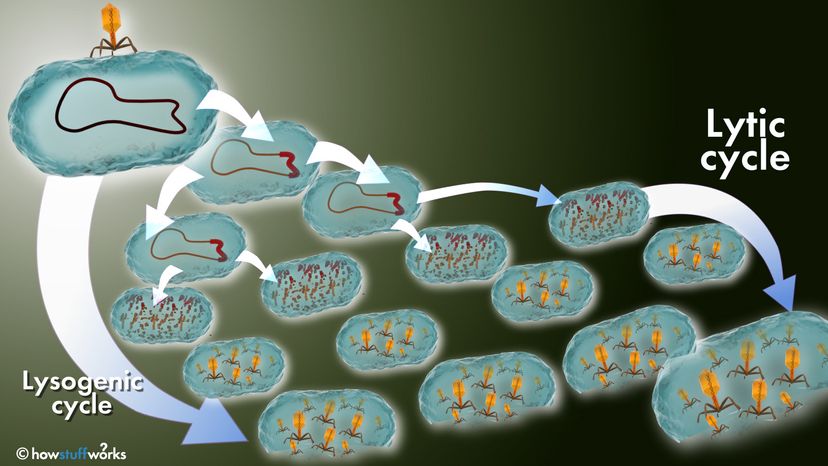Lysogenic Cycle

Once inside the host cell, some viruses, such as herpes and HIV, do not reproduce right away. Instead, they mix their genetic instructions into the host cell's genetic instructions. When the host cell reproduces, the viral genetic instructions get copied into the host cell's offspring.
The host cells may undergo many rounds of reproduction, and then some environmental or predetermined genetic signal will stir the "sleeping" viral instructions. The viral genetic instructions will then take over the host's machinery and make new viruses as described above. This cycle, called the lysogenic cycle, is shown in the accompanying figure.
Advertisement
Because a virus is merely a set of genetic instructions surrounded by a protein coat, and because it does not carry out any biochemical reactions of its own, viruses can live for years or longer outside a host cell. Some viruses can "sleep" inside the genetic instructions of the host cells for years before reproducing. For example, a person infected with HIV can live without showing symptoms of AIDS for years, but he or she can still spread the virus to others.